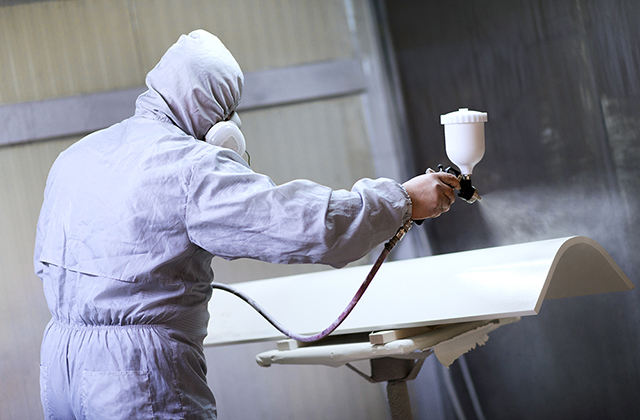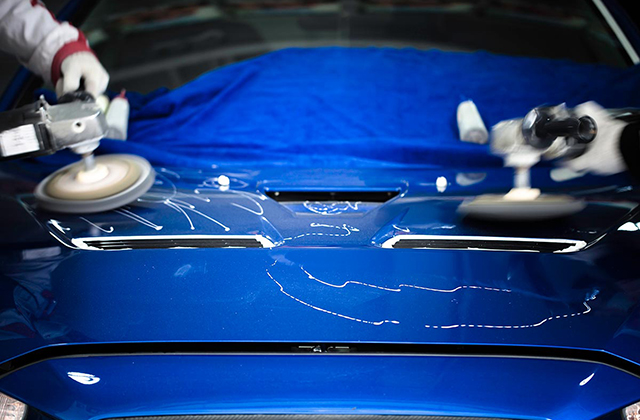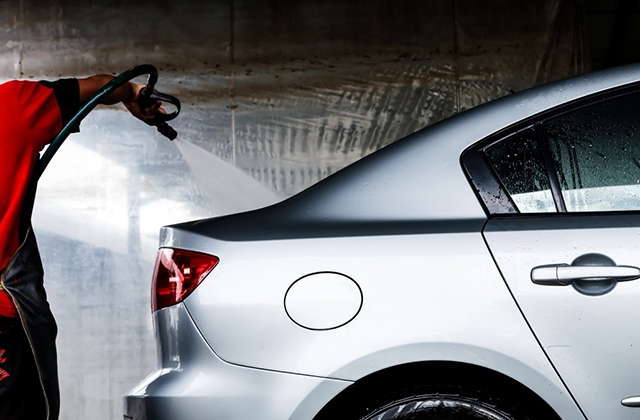
These days there is something you can do rectify this situation. A new paint job works wonders but when you start looking around for an auto paint shop you realise that the cost to paint a car can be prohibitively expensive depending on what needs to be done. Or it can be relatively cheap but remember that old adage – you get what you pay for. There is a big variation in the quality and level of workmanship out there and all these factors directly influence how much it will cost to paint a car.
Decisions That Influence The Cost Of Painting Your Car
The first order of the day is to decide what sort of quality and end result you are looking for in the finished product. Do you want a high-end paint job complete with customised airbrush artwork and two-tone metallic paint using top of the range paint? Or are you just looking for a good basic repaint using good quality, durable paint that will stand the test of time, at least for a few years. Your answer to this question will determine whether you look for a specialty high-end paint shop or one of the more middle of the road ones and whether it’s going to cost you a small fortune or somewhere in the vicinity of $1000 to $5000.
Secondly, can you do any of the preparation work yourself? Before any car can be successfully repainted there is a fair amount of prep work involved and this is where a lot of the expense is incurred. If you have the time, the skills, the tools and the knowledge to do some of this work yourself you could save yourself quite a bit of money. If not, don’t even attempt it because you may just create a mess that will cost you more money to have fixed.
What Contributes To The Cost To Paint A Car
Most of the costs involved in repainting a car can be narrowed down to two main components – the quality of the paint and the amount of prep work that needs to be done.
Paint Quality
Auto paint varies hugely in quality and cost so you really need to ask each repair shop what quality paint they use. At the top end of the scale are the expensive ones that usually have reduced chipping and peeling qualities, are very durable, don’t fade as quickly and will withstand the elements for a good number of years. These types of paints can cost several hundred dollars a quart and usually come with a lifetime warranty.
More economical auto paints, such as those used by many of the middle range auto shops, still offer excellent value and quality for money. They’re durable, have a reasonable life span on the vehicle, can withstand normal wear and tear and generally come with at least a few years guarantee.
At the bottom end are the cheap paints. These types of paints are rarely guaranteed to last, will chip and peel easily and fade relatively quickly. However, they’re super cheap in comparison to better quality paints and may ‘do’ the job if you’re just looking to smarten the car up for resale.
Preparation Work
This is the other big expense involved in the cost to paint a car. The old paint has to be sanded back from the entire area being painted, which in a total repaint job is the whole exterior of the car at least. Dents, bumps, rust and scratches have to be fixed before the new paint can be applied and this is labour intensive, time consuming work.
Things on the car like the windows, mirrors, lights, trim, door handles, bumpers, antennas, tyres and spoilers also need to be removed or masked to avoid over spray damage. The more upmarket paint shops will often remove what can be removed to give a cleaner, more professional finish and only mask what they can’t remove. Again, this is time-consuming work and so the costs mount up. Discount paint shops may cut costs here by simply masking everything rather than removing, resulting in a less professional look.
So the bottom line here is that if a good, clean, professional looking finish is what you’re looking for, choose a quality painter.
General Price Ranges For Painting A Car
A bargain basement paint job can cost as little as a few hundred dollars – anywhere from $300 to $900. However, the paint will inevitably be generic, cheap synthetic enamel and there will only be a minimum number of coats applied. Some areas of the car, like under the hood and inside the doorjambs, may not be painted at all and protected areas will have likely just been masked rather than removed. Dents and damage to the panelling will probably simply be painted over rather than repaired first.
A better quality job will set you back somewhere between $1,000 to $2,500 depending on make and model of the vehicle, its condition and how much needs to be painted. The paint will be higher quality, usually brand named and there will be enough coats laid to create a quality finish, including several clear coats at the end to protect the coloured paint and produce a glossy, smooth finish. More care and attention will be paid to protecting areas that aren’t to be sprayed and to repairing panels prior to painting.
Right at the top end is the ‘show-room quality’ auto paint job, costing anywhere from $2,500 upwards depending on the model and make, vehicle condition and how much you want done. The vehicle will be prepped to within an inch of its life, including a complete sand back to bare metal. Every dent, scratch and bit of rust will be repaired if required and everything that isn’t to be painted that can be removed will be removed. Up to 18 to 20 layers of high quality professional brand name paint will be applied with another 6 to 8 clear coats applied over the top and you can expect the entire process to take a month or more to complete.
Vicent Feldman is an Australian journalist specialized in writing rich, unique, relevant and interesting niche articles about the cost to paint a car.
Article Source: http://EzineArticles.com/expert/Vincent_Feldman/1394828
Article Source: http://EzineArticles.com/9189644

